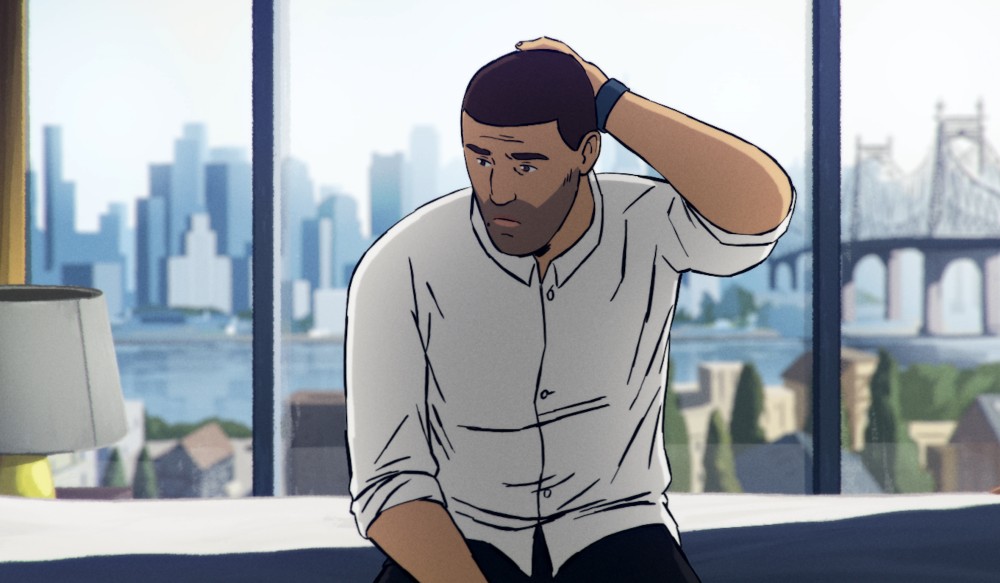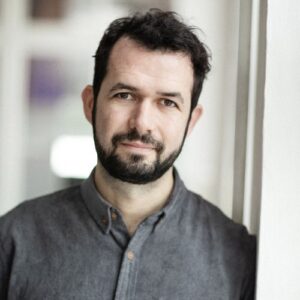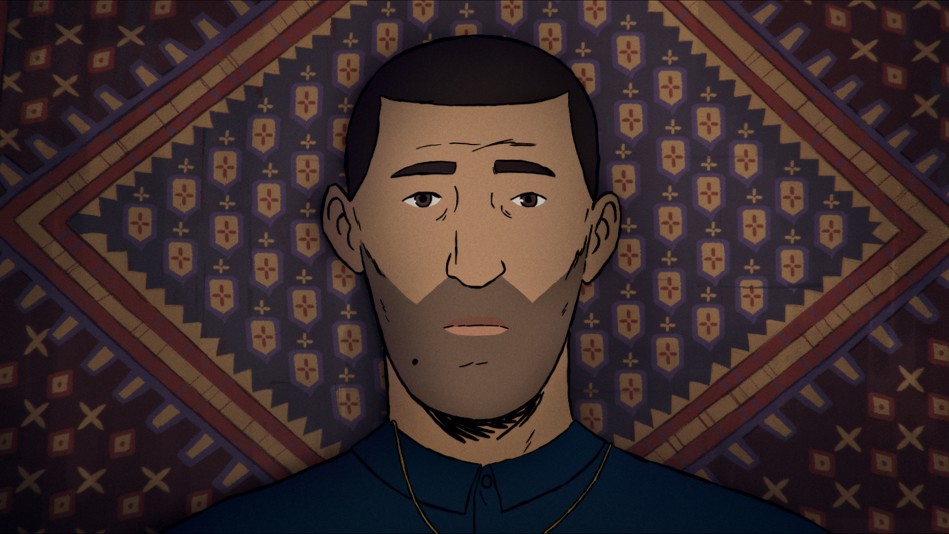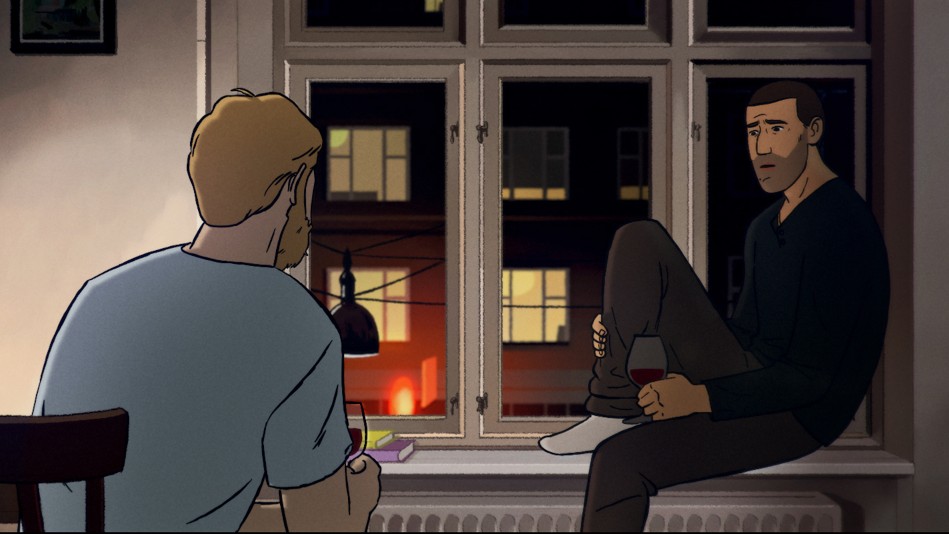
When Danish filmmaker Jonas Poher Rasmussen’s film Flee was listed as one of the films selected for the Cannes Film Festival in 2020 (which ended up being cancelled), very few were paying attention to it, and when it finally premiered at Sundance earlier this year, it probably also didn’t have quite the expectations of other films.
As people quickly learned, Flee was unlike all the other documentaries that debuted at Sundance, being that it was an intimate true story about a man named Amin Nawabi (actually a pseudonym), a lifelong friend of Rasmussen’s who told the filmmaker a moving story about how he and his family got out of Afghanistan in the ‘80s, and how he ended up living in Denmark. Amin, talking to the filmmaker in anonymity, relays how he dealt with the terrors that came with escaping Afghanistan via Russia and also realizing that he is gay and having to contend with being in two countries where homosexuality was frowned upon.
Flee is a beautiful and emotional film that really makes you count your own blessings on how lucky you are to be in a world where you can live freely and not deal with the type of oppression and horrors Amin would have experienced. It’s already won a ton of awards going back to Sundance where it received the Grand Jury Prize in the World Documentary category right up until recently when it won the Gotham Award for Best Documentary.
Earlier this week, Below the Line got on Zoom with Rasmussen to talk about his film that could very well be vying for Oscars in three separate categories: feature documentary, feature animation and international film, being that it was also Denmark’s selection for that category at the Oscars.

Below the Line: I know you’ve made other documentaries before this, but this isn’t your typical doc. How did this project come about? I know you’ve known Amin for a long time, so did he mention to you that he wanted to tell his own story? Was it something you asked him about?
Jonas Rasmussen: I’ve known him since I was 15. He arrived in my little Danish village, all by himself from Afghanistan, and [was staying] with a family just around the corner. We met up at the bus stop every morning, going to high school, and became good friends. Even back then, I was curious about how and why he had gotten to Denmark and to my village, but he didn’t want to talk about it at all. As our friendship grew, this curiosity was always there. I have a background in radio and like 15 years ago, I asked him if I could do a radio documentary about his story, and he said, no, he wasn’t ready. But he also said that he knew that he would have to share his story at some point. When he was ready, he would like to share it with me. I kind of had in the back of my head that this was something we could do together at some point. I just didn’t have the format, and I didn’t know how to tell it yet.
And then, eight years ago, I was invited for this workshop called Anidox, where they combine animators and documentary filmmakers, to develop ideas for animated docs. They asked me if I had an idea, and I thought maybe this is a good way to tell [Amin’s] story. I asked him, and he said yes, and he felt ready to share his story, and he actually felt the need to share a story. He was really intrigued by the fact that he could be anonymous behind animation, because what you hear in the film, what you see, it’s the first time he shared his story. It’s not easy for him to talk about, so the fact that he could be anonymous and still keep control over when he wants to talk about it. So he wouldn’t be a public figure and someone couldn’t walk up to him in the street and ask about his innermost secrets and traumas. Really, the fact that he could be anonymous is what led to him wanting to [tell his story].
BTL: The movie has played a number of festivals, so has he seen it or been to any of the festivals where it was shown, even if he was there in secret?
Rasmussen: No, no, he’s anonymous. He’s not participating in press at all. He did sneak for a screening in Copenhagen with an audience, but otherwise, no.
BTL: It sounds like you already had the idea to do this as animation even before you at down with Amin for him to tell his story. Did you find someone at this workshop to do the animation?
Rasmussen: We did some first initial tests with some of the participants at the workshop, but then, later on, we found the proper animation studio, Sun Creature Studios, who did all the animation. But in the beginning, it was really just developing the idea and trying to figure out how are we going to do this? There’s so many possibilities in animation, and there are so many different styles you could go with, so it was just a slow process of figuring out… also, because I’ve never done animation before, I had to kind of learn the process, learn about the craft, and then slowly figure out, “Okay, how can we tell the story?”
BTL: One of the things about doing this in the animation is that he’s telling you the story and then you’re recreating it, but how involved was he in the process in terms of depicting certain places and people that he told you about? Were there any pictures he could provide?
Rasmussen: He was very generous and said that I had quite a free hand to work on the story, but of course, he was a big part of … I transcribed all the interviews and put it into documents. Because his story takes place over more than 30 years, so I had to choose my path through all the stories I got and put it into a document and say, “Okay, this is what I want to tell,” and then he would comment on that if I had misunderstood things or if there was something that was factually wrong. Also, if I’d taken out things that he felt were crucial to really understand his story. There was conversation throughout, and also, he would watch an edit, and he gave comments. The visual style, all the present day, things are roughly based on video material I shot — everything is shot on video as well. The animation director would have access to the video and kind of take detail from that and put it into the animation, so it felt authentic. And then everything that takes place in the past, it was really about trying to recreate what happened and being as precise as possible. We spent a lot of time doing research on what Afghanistan looked like.. what did the exact neighborhood he lived in? What is his childhood home looked like? We had a couple of photos from his childhood that we could use as reference, but we also just went back, went to libraries, found archival footage. We just took a lot of things directly from the archive and grew it and put it into animation, so it felt like Afghanistan in the ’80s. We had a group of Afghans who lived there, who kind of became our consultants to make sure that things were right.
BTL: This is still like a normal documentary where you still have to do a ton of research, so it’s more than just recording his story, animating it, and then it’s done. It’s a lot more work than that.
Rasmussen: Yeah, definitely, definitely. Also, because we really wanted to make sure that this felt authentic, it should feel right. It shouldn’t feel like something that we had just imagined up.
BTL: You mentioned that you had a transcript of all the interviews, which I imagine is over the course of sitting down with him, but did you have something that resembled a script at one point?
Rasmussen: It became kind of a script, but because I had all the transcriptions from interviews and then I would arrange it, as it would be in the film. And then, of course, I wrote all the dialogue for the reenactments of the sequences in the film, because we needed to have the actors in there to do the dubbing for all that. So it became something like a script in the end.
BTL: I’d like to talk about some of the other people you worked with on this, so was the film’s editor someone you had worked with before on your other docs or someone more familiar with animation?
Rasmussen: The editor Janus [Billeskov Jansen], he’s kind of the grand old man of editing in Denmark. He’s had six films nominated for Academy Awards before, and he edited The Hunt and Another Round, the one last year. I had used him as a consultant before, but this was the first time I worked with him. He hadn’t worked with animation before, so it was a new experience, a very exciting experience for him as well, because the process is very different. Normally, when you do documentaries, you go out and you shoot the material, and then you bring it back into the editing room, and then you build a story from what you’ve got. You become a slave of the material you shot, right? But here, because you actually edit before you start animating, so you kind of edit before you shoot, which gives you a great amount of freedom all of a sudden. If you’re doing a scene and you’re missing a close-up shot of a certain character. If it was a live-action documentary, too bad, like you just have to work around it. But here, you just asked the storyboard artist, Albert, we need the close-up shot, can we please get it? And then you would get it, so you could be a lot more precise in the storytelling that I’m used to, but also that Janus was used to in documentary filmmaking
BTL: Was it a pretty big team of animators? This is all 2D animation, right? I’m sure there’s computers involved, but it’s all 2D and hand-drawn, right?
Rasmussen: It’s all 2D, and it’s drawn by hand, but honestly, on a Cin6, so it’s directly on a computer and then you can erase. It’s not like in the old days where you had paper and stuff. I think we had between 10 and 12 animators and then there’s all the cleanup artists and then there’s comp and there’s the background artists. I think at its highest, we had a team of 50 or 60 people working on the film.
BTL: The movie obviously looks beautiful, but I do want to talk about the sound and the music, because those are two very key things. I don’t know how many people are gonna watch Flee and realize how much is involved with putting together the sound effects and adding things sonically to make it feel real. Can you talk about how you went through that with your sound editor or sound designer to help put that together?
Rasmussen: I have a background in radio, so I actually started out building a rough cut of the film in just sound, so you have like an audio cut in the beginning, where I would voice all the characters in the film. I would scratch voices for Amin’s sisters and brothers and all the human traffickers and then put it together and have rough sound. And then, of course, in the end, we would work on that and put on disciples, and then bring it into sound. Again, the call was that it should feel authentic, and we would grab a lot of sound from the archival footage, that we spent a lot of time researching and put that in the film. But it really came from this testimony, that you needed to really pay attention to his voice and little pauses in his words. We wanted to keep in all the little errors like when he stops talking, or if he sinks, or if he kind of mumbles a little bit, just keep that in there. It needs to feel human, so you always have the sense that behind animation, there’s a real human being. It was really building a sound design that should feel cinematic, but at the same time feel authentic.
BTL: It really feels like you’re just sitting down with him for 90 minutes as he tells you his story, and it takes a lot of work to make that sound so natural. It’s not just about hitting record. What about the composer, Uno Helmersson, had you worked with him before or is he known there in Denmark?
Rasmussen: I hadn’t worked with him before, but in Scandinavia, he’s done a lot of amazing work on different films. He also worked on The Painter and the Thief that I think was nominated two years ago, and a series in Scandinavia called The Bridge. He’s done a lot of work, and it really was again about the storytelling. We talked a lot about every piece of music in the film. What is the scene in the film? What’s going on, and how can we kind of use the music to amplify this feeling. For example, there’s a sequence in the film where Amin and his family had to flee Kabul in Afghanistan, and you have all these strings, and you have this kind of massive pulsating strings going through that sequence, and then you have this very thin solo violin on top of it. We talked about the violin representing Amin, and then the rest was just the wall pushing him out. So all the time trying to use storytelling and bring it into the music and how to support the storytelling of the specific sequence with the music, as well.
BTL: I wanted to ask about one of the credits at the end that said, “Artistic Development by Guillaume Dousse,” which was a really interesting credit I’m not sure I’ve ever seen on a movie before.
Rasmussen: He came on board from the very beginning and was the art director. The process of financing the film was so long, so at some point, he had to go off and work on a project, and then Jess Nicholls came on board. In the beginning, he really helped create the language and the vocabulary for the film. That’s kind of why he has that credit. It does look a little odd, I can see that, but it was really just because of time, but at some point, he just had to move on to another project.
BTL: This was supposed to be at Cannes 2020, so in May or June or July last year, so was it done that whole time before it premiered in January earlier this year? Did you finish it before COVID or were you still working on it?
Rasmussen: We were doing the final sound in Norway when COVID hit, and I had to rush home, because borders were closing in Denmark. So I just made it home the day before the borders closed, and then, we had the film was almost done, but because of COVID, everything just went into slow motion. It went so slow, so actually, the film wasn’t finally done until just like before Sundance, where it premiered.
BTL: How did Riz Ahmed get involved? I saw Nikolaj Coster-Waldau’s name on it as exec. producer, and I figured that was because he’s Danish and wanted to be involved, but it was interesting to see Riz listed as an exec. producer.
Rasmussen: It was just the sales agent who had the idea that we should do an English dubbed version and have some big name actors on it to get the film to a broader audience. We started to talk about our ideal cast and Riz immediately came to mind, both because he has a similar background to Amin, and he’s amazingly talented, of course. And he really fights for representation in film. It took a while before we could get a hold of him, but one of our partners, Vice, helped us out and got us in touch with him. He saw the film and really liked it and really wanted to engage. So he’s done an English-dubbed version of Amin, and Nikolaj Coster-Waldau is doing the English dubbed version of me. So there’s going to be an English dubbed version of the film later on, I think early next year.
Flee will open in New York and L.A. on Friday, Dec. 3 (today) and presumably will expand to other cities over the coming months. All photos courtesy NEON, except where noted.







